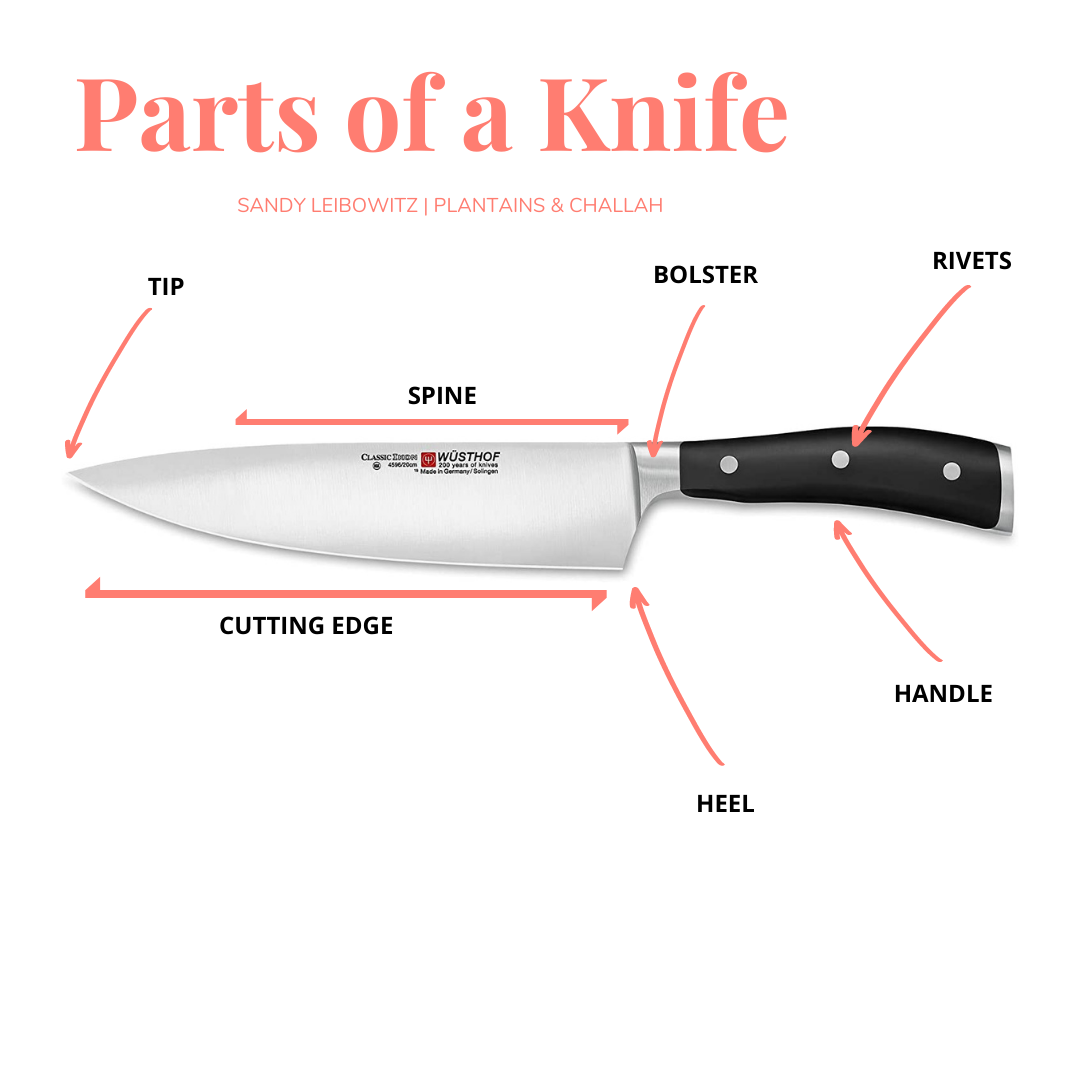
Your Chef knife is the most important tool in the kitchen. The more you know about it, the more you can use it to its maximum potential. Each part of the knife is made intentionally and has a purpose. I break them down for you below.
Spine: This is helpful for whacking lemongrass, in place of a meat mallet for whacking meat between plastic wrap and for scraping food away from your cutting surface (instead of using your blade!)
Tip: This is useful for vertical cuts on the shallot/onion and even garlic. It also helps if you use it for peeling away flesh from bone if you are fabricating poultry or meat.
Cutting Edge: This is the sharpest part of knife, AKA the “blade”. When chopping, many cooks forget to utilize the entire blade. This is really important for efficiency and precision.
Bolster: This gives the knife balance. It also gives some weight to the knife. You do wrap your hand around this a bit, and in some knives, the bolster and handle do not have a smooth transition – something to keep in mind if you will be doing a lot of chopping as it can contribute to calluses. (In addition to your knife being dull and having to put forth more pressure.
Heel: This area is right beneath the bolster which gives it some extra strength and control and is good for pressing down on harder to get through items (like chicken joints or root vegetables)
Tang: This is not shown in the image, but it’s part of the blade itself and continues into the handle. In some knives you can see it from above and below the handle. There are partial tangs and full tangs. If you cannot see it, at all, it is called a rat-tail tang. They don’t hold up over time so I don’t usually recommend them. An exception would be a paring knife. Full tangs are more sturdy and important for heavy duty work and partial tangs can work fine for lighter jobs like bread, some fruits and vegetables etc.
Rivets: These are the what hold the tang to the handle. They are not always visible.
Handle: The handle is the part you will hold for a long time, so make sure that it feels comfortable in your hand. Provided you are holding it properly, you should theoretically be able to chop for hours without fatique or stress on your hand. there are a variety of handles made with materials like different woods, plastic, vinyl, textured metal. etc.
For more information on other knives, check out my Introduction to Kitchen Knives article
I added a few more things to my amazon shop if you want to browse. If there is something in particular you have questions about, just reach out!